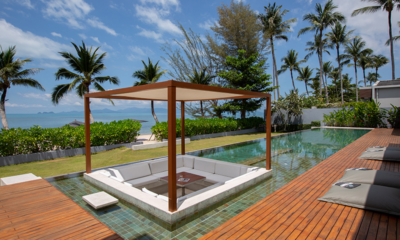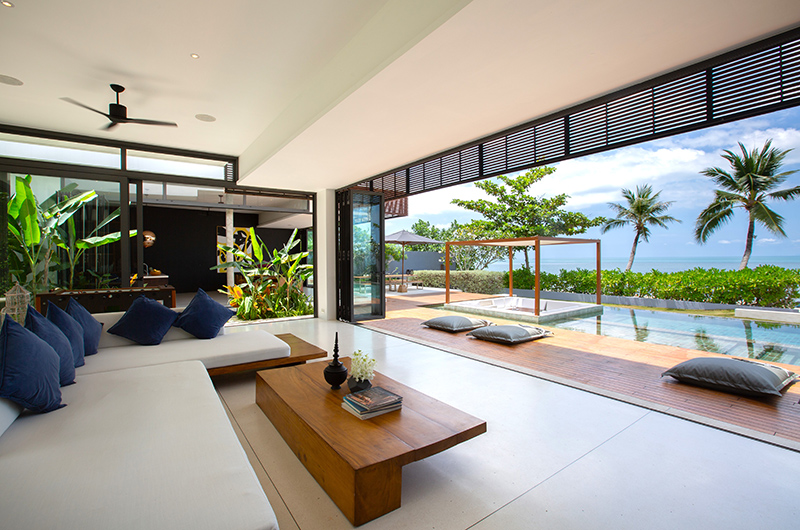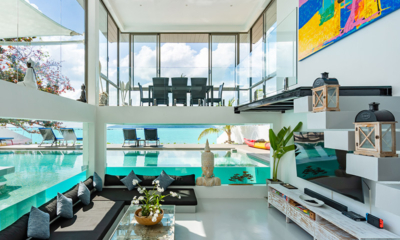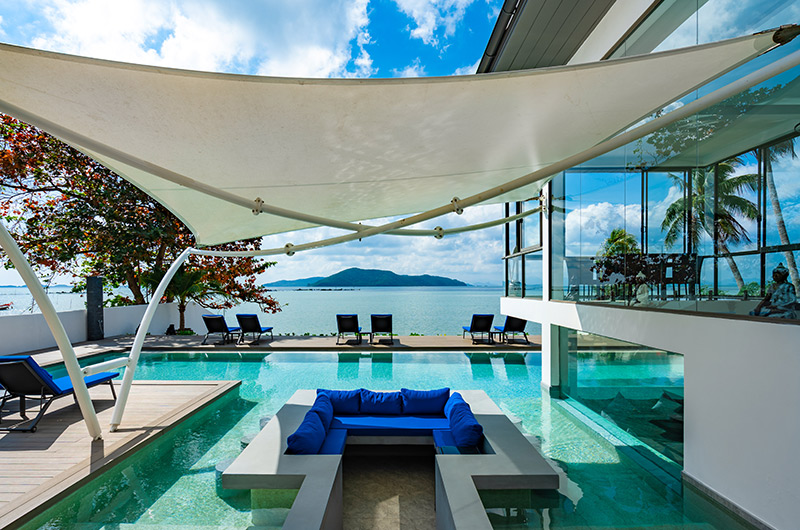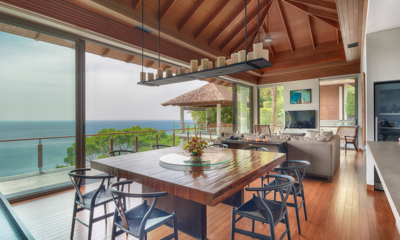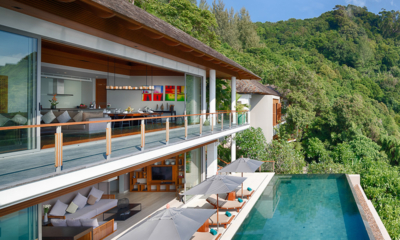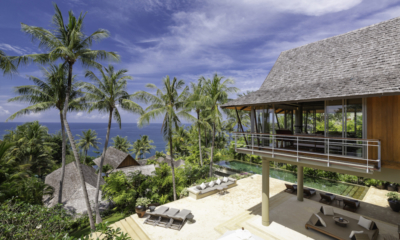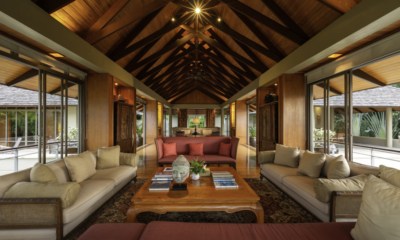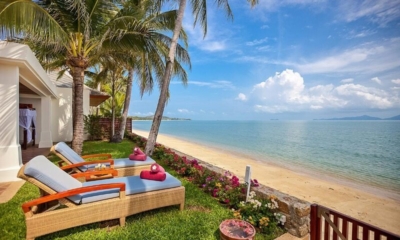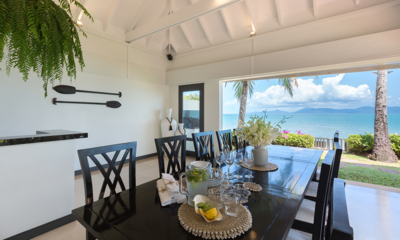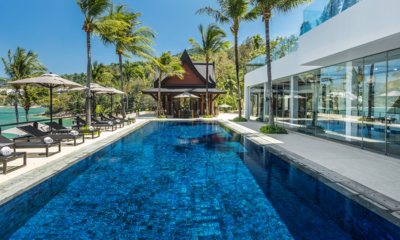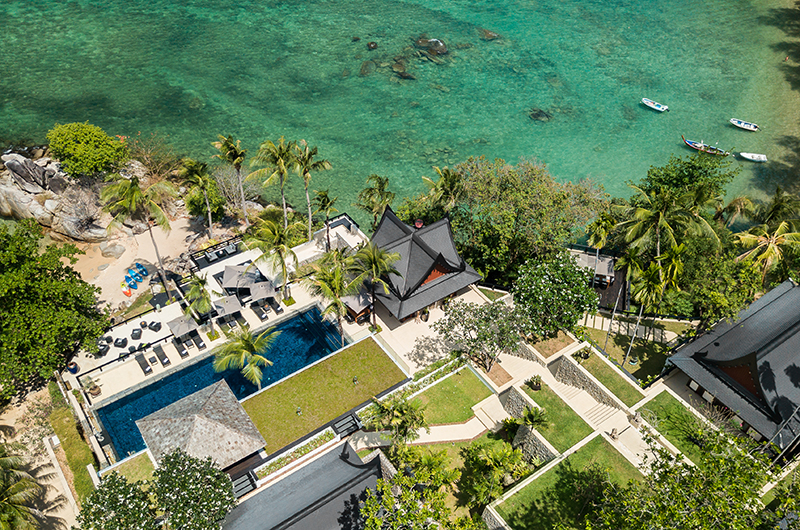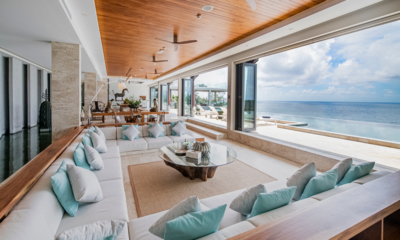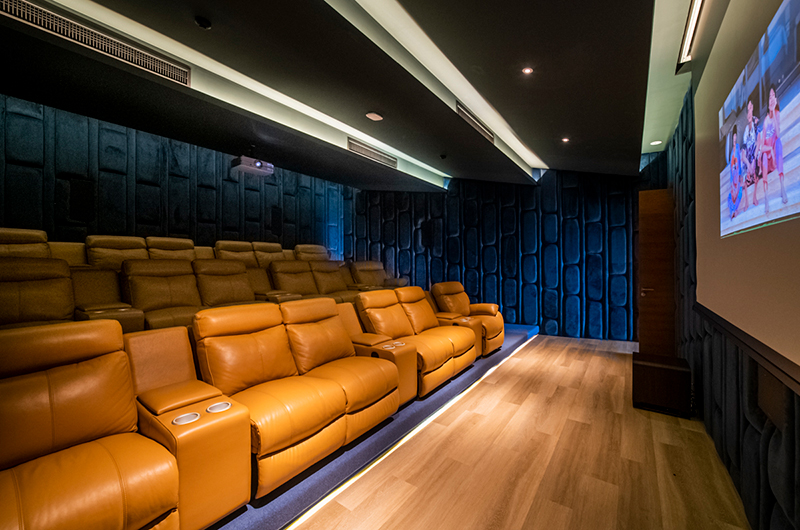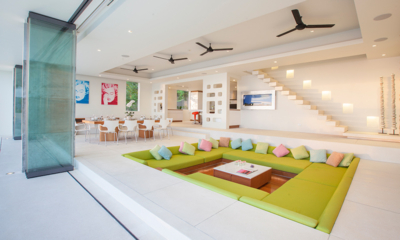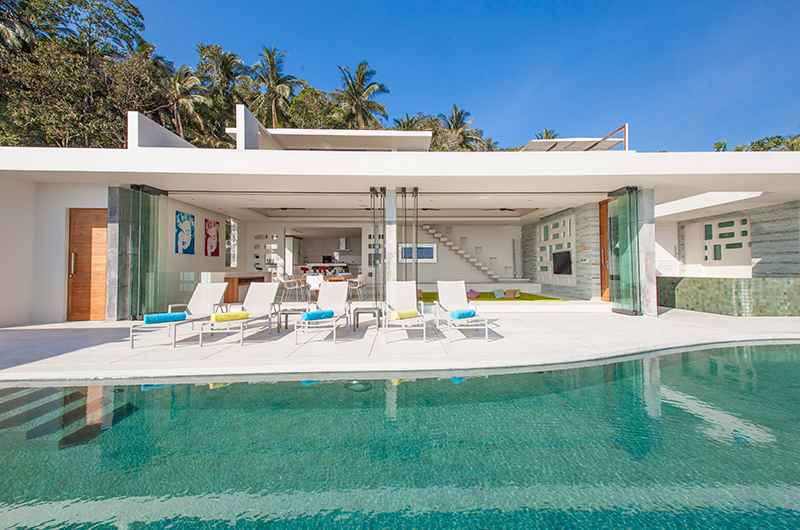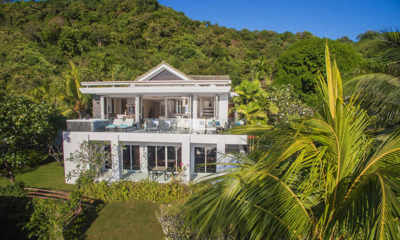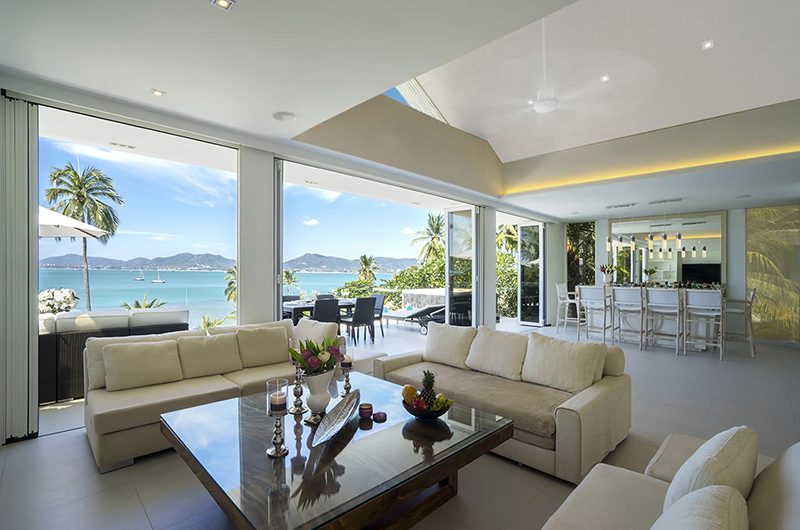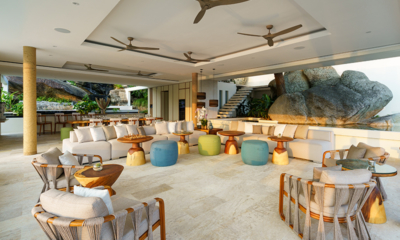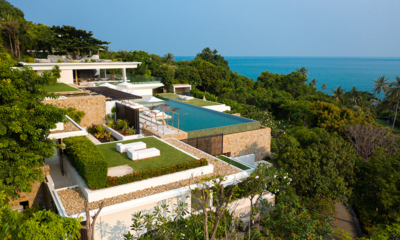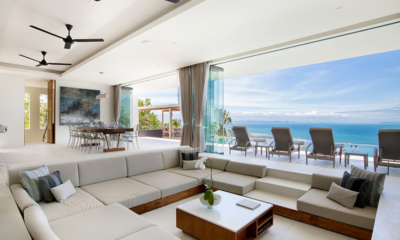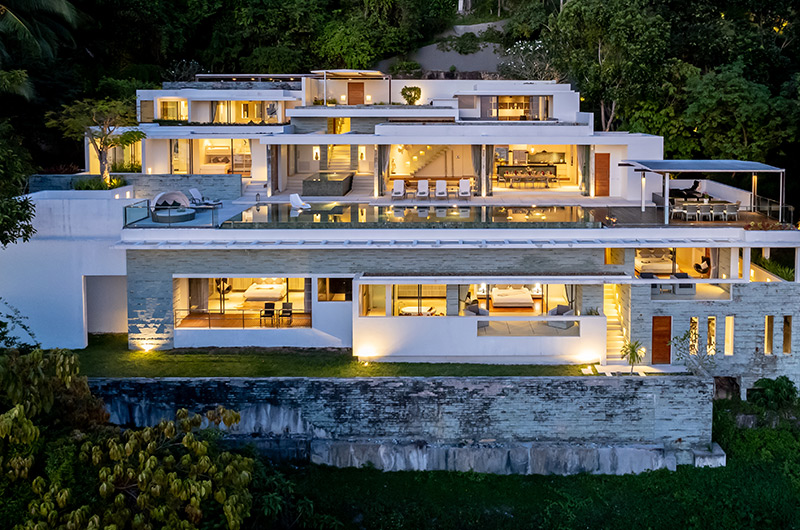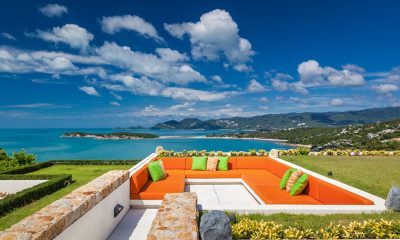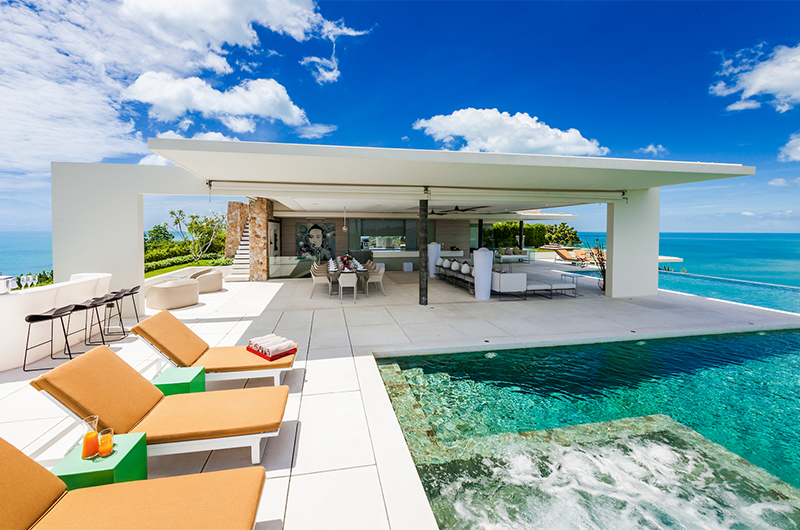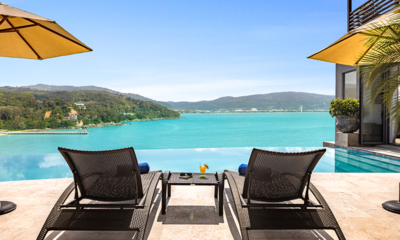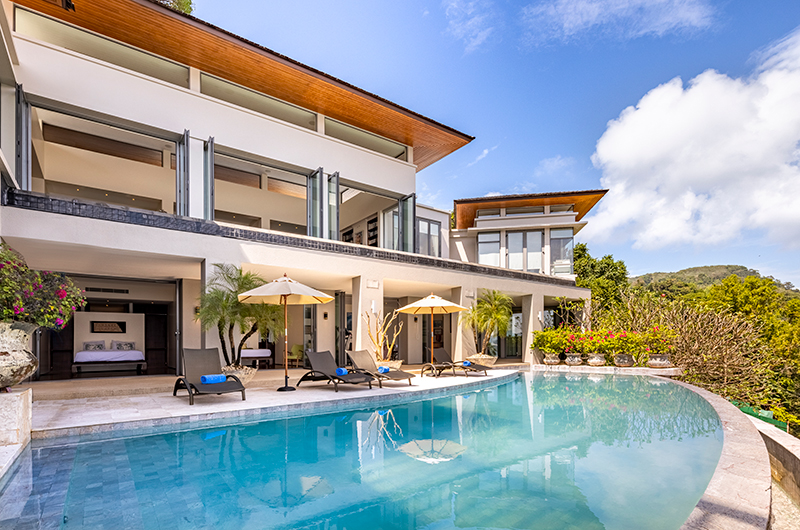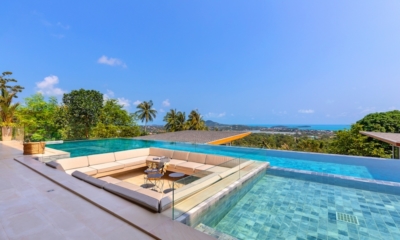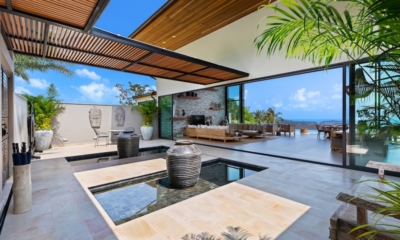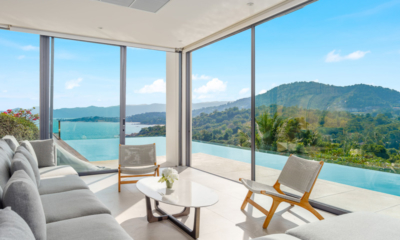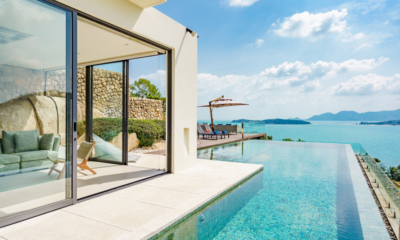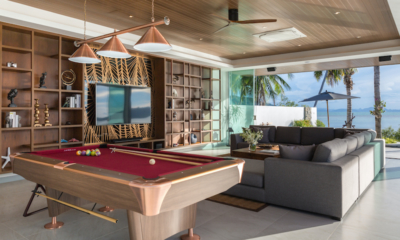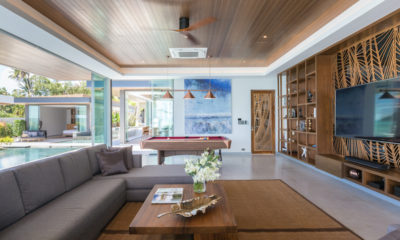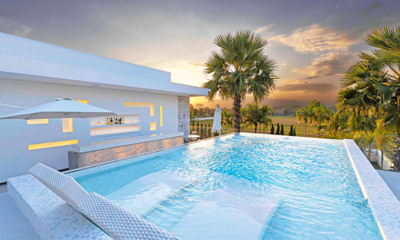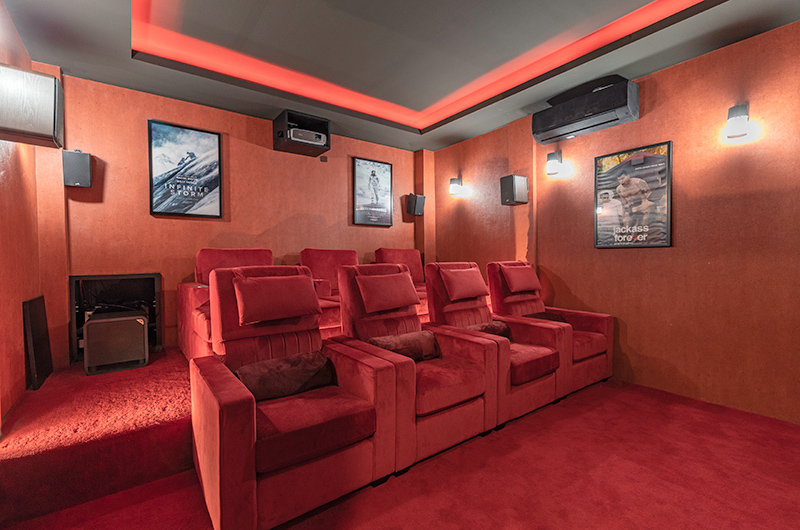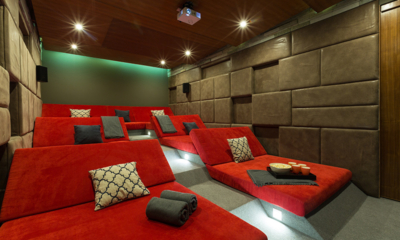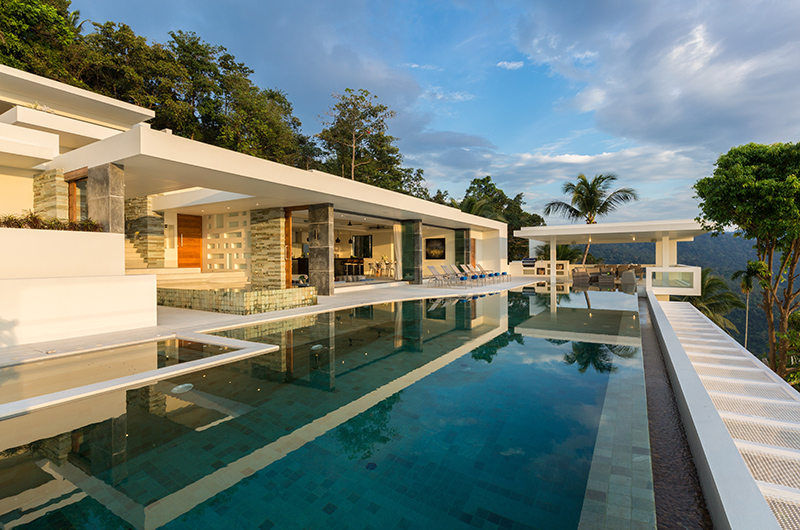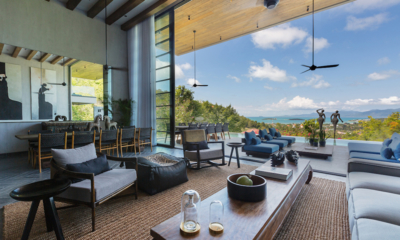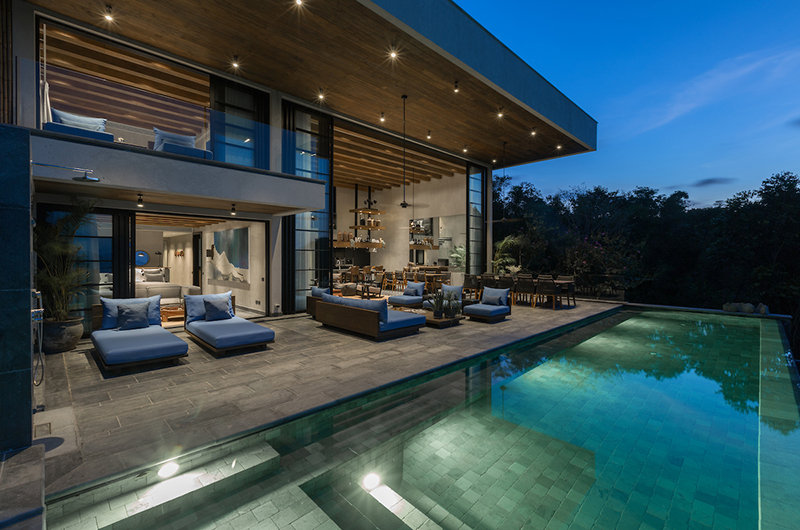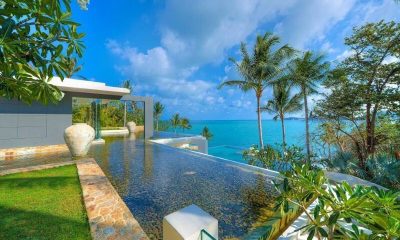Whether you’re a first time traveller or a repeat visitor, Thailand has a way of wowing you. Maybe it’s the gilded temples or the ancient kingdoms. Perhaps it’s those paradise beaches surrounded by crystal clear waters and breathtaking limestone islands. Or maybe you’ll be charmed by the sizzling nightlife, the spicy cuisine or simply by the exciting buzz of the local way of life. After experiencing the Land of Smiles first hand, you’ll be grinning from ear to ear too.
Overview
Year after year, Thailand reigns supreme as the most visited country in Southeast Asia. There are many reasons why the ‘Land of Smiles’ continues to attract visitors from far and wide. Brimming with beauty, splendour and adventure, it’s not surprising that many find themselves returning here year after year.
Bookended by Myanmar and Laos in the north and bordered by Malaysia in the south, Thailand is a large and diverse country that genuinely offers something for everyone. You could easily spend a week or two simply dining your way through buzzy Bangkok or pass the time exploring remote villages and hilltop temples tucked away up north. The dreamy islands down south are as ideal for revelling in the nightlife as they are for luxuriating in the privacy of your own clifftop villa… or perhaps you’re drawn to Thailand’s underwater wonders instead?
Thailand’s rich heritage and deep spirituality are woven to the fabric of everyday life, with glimmers of awe and wonder present even in the mundane. You’ll see monks dressed in orange robes weaving their way through traffic and small spirit houses gracing most house fronts. Exploring gilded pagodas and the remains of ancient kingdoms is sure to leave even the most jaded traveller in awe. In this endlessly fascinating country you can experience natural wonders, spiritual splendour and heart-warming hospitality, all in one day. No matter which part of Thailand you’re exploring or which experience you choose to uncover, one thing’s for sure: the Land of Smiles will leave you wanting more.
History & Culture
The early days of Thailand’s history (or Siam as the country was formerly known) are shrouded in mystery. Archaeological findings show early signs of agriculture as early as 7,000 years ago and early signs of urbanisation over 2,000 years ago.
The kingdoms of Sukhothai and Lanna were established by the 13th century. The Ayutthaya Period (1351–1767) is considered the “golden period” in the country’s history and flourished until 1767 until finally succumbing to Burmese forces. The Siamese resistance was followed by Rama I who was crowned in 1782, becoming the first monarch of the Chakri dynasty who rule the country to this day.
While the country maintained close relationships with many Western nations throughout the centuries, Thailand remains the only country in Southeast Asia that was never colonised by a European nation. In 1932, Siam was transformed from an absolute monarchy to the constitutional monarchy we know today. In 1939, the country’s name was officially changed to Thailand. Thailand’s transition from a low-income to an upper middle-income country within a single generation is often cited as a remarkable success story.
Planning Your Trip to Thailand
Thailand is a large and diverse country with incredible destinations dotted throughout. When planning your trip, prioritising is key: do you want to cover several locations or stick to just one area during your trip? Our Thailand travel guide aims to give you the essential information, list the most popular things to do in Thailand, provide more information on locations you want to visit, and finish with some inspiration from our travel writers.
Thailand Weather
Generally speaking, the weather in Thailand stays hot and humid throughout the year. That said, this is a large country and the weather can vary drastically between different regions. Roughly speaking, the best time to visit Thailand is between November and February, regardless of the region. This is when the weather is at its driest and sunniest and the temperatures are relatively moderate. April is usually the hottest month of the year with temperatures climbing up to a stifling 40°c. The rainy season spans from July to October. Again, the exact weather patterns will depend on the area you’re staying in. You can read more about the weather in Phuket here and the weather in Koh Samui here.
Things To See & Do in Thailand
Thailand is a stunning tropical country that really offers something for everyone. Whether you’re looking to explore fascinating cultural landmarks, discover lush natural landscapes, luxuriate on a golden sandy beach or dance the night away at a full moon party, Thailand has it all. Bangkok offers gilded temples, wild night life and Michelin level dining. In the north, Chiang Mai and Chiang Rai provide inspiring cultural experiences and stunning mountainous landscapes. Finally, moving down south to the idyllic islands of Phuket and Koh Samui you will discover paradise beaches, epic snorkelling, magical limestone islands, fabulous beach clubs and sublime tropical sunsets.
Attractions
Thailand is dotted with bucket list landmarks ranging from sacred temples to ancient kingdoms and floating markets. The landscape alone is incredibly varied with the hectic buzz of Bangkok beautifully juxtaposed by the misty mountain villages of the north and the postcard ready limestone islands waiting down south.
CULTURE
They don’t call it the Land of Smiles for nothing! The Thai people are known for their warmth and hospitality and the country has long been Southeast Asia’s most visited destination. The country’s reverence for the Buddhist faith and the Monarchy is visible in the stunning golden temples that permeate the land and the majestic palaces and relics which celebrate its royal heritage. Thailand takes pride in being the only country in the region to have never fallen under colonial rule. The ancient cities of Sukhothai and Ayutthaya -which have both been declared UNESCO World Heritage Sites – provide fascinating insight to the country’s rich heritage.
TEMPLES
Over 90% of the local population are Buddhist and there are said to be well over 40,000 temples scattered throughout the country. Boasting stunning architecture, incredibly intricate artwork and an irresistibly serene ambiance, many a temple – or wat as they are known in Thai – have become popular tourist attractions. Here are some of the most iconic temples in Thailand:
- Wat Pho: This Bangkok landmark is home to the famous Reclining Buddha and the country’s largest collection of Buddha images.
- Wat Rong Khun: Chiang Rai’s iconic White Temple features extensive glass, mirrors and contemporary art.
- Wat Phra Si Sanphet: Famed for its three stupas, this temple is located in the ancient city of Ayutthaya and dates back centuries.
- Wat Phra That Doi Suthep: This clifftop temple – which is accessed through a 306-step staircase – is one of the holiest temples in northern Thailand.
- Wat Chaiyathararam: The most important temple in Phuket features stunning architecture and offers beautiful views of the ocean bay.
NATIONAL PARKS & NATURE
From wild waterfalls to beautiful beaches and from verdant paddy fields to untamed jungle, Thailand truly is a land of natural wonders. Here are the most famous national parks and natural landmarks in Thailand.
- Khao Yai National Park: Thailand’s most visited national park features dense jungle, lush waterfalls, scenic mountaintops and exotic wildlife.
- Phang Nga Bay Marine National Park: A popular destination for kayaking and snorkelling, this stunning collection of islands is home to the iconic James Bond island.
- Erawan National Park: Home to the beautiful, seven-tier Erawan Falls, jungle trails and exotic animals including monkeys and elusive tigers, elephants and gibbons.
- Ang Thong Marine Park: This collection of 40 paradise islands with their lime cliffs and sandy beaches are a popular destination for snorkelling and kayaking.
- Doi Inthanon National Park: The “Roof of Thailand” is named after Doi Inthanon, the tallest mountain in Thailand which is graced by beautiful twin pagodas.
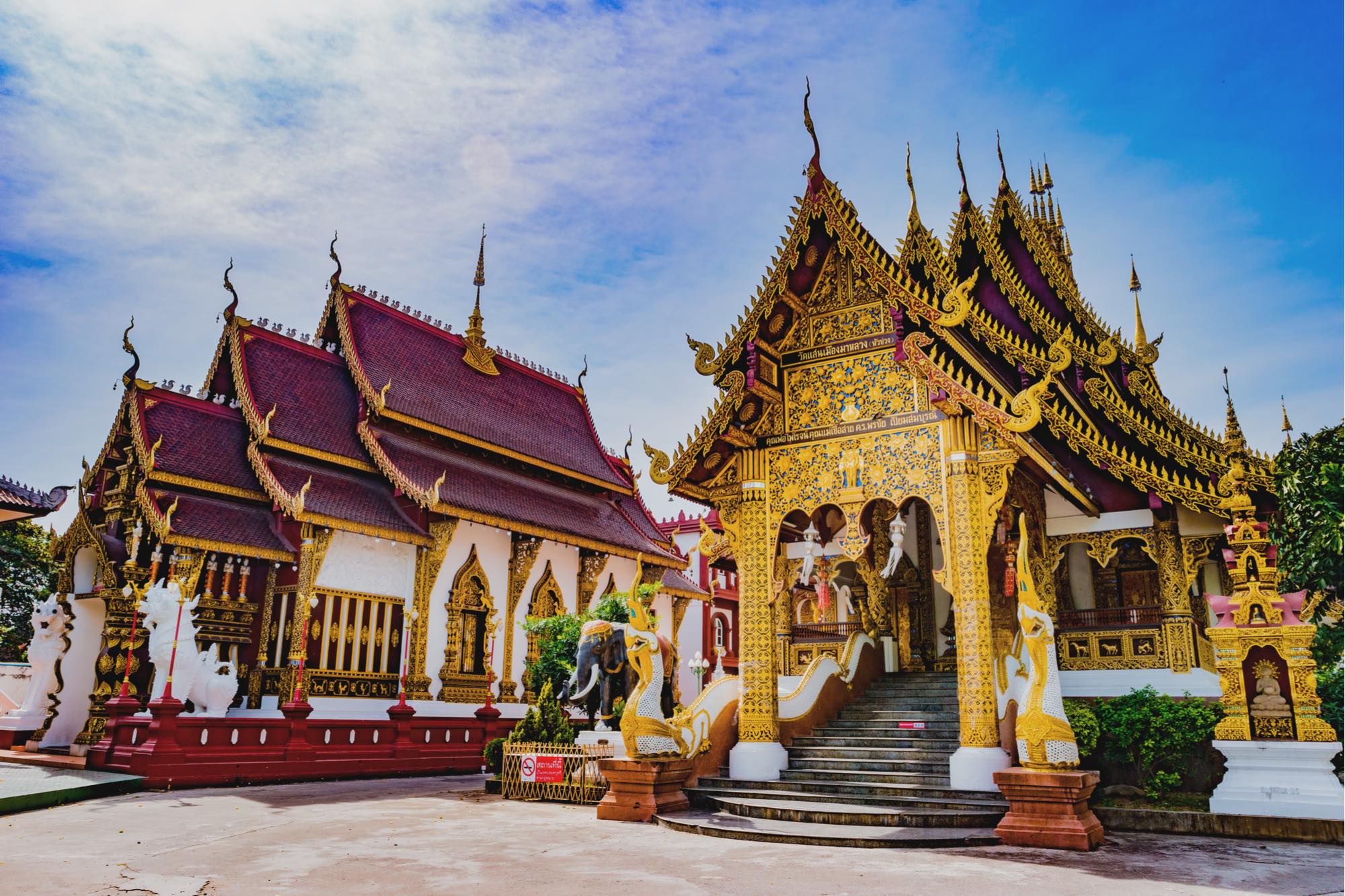


Relaxation
Though the Land of Smiles offers sizzling excitement and thrilling adventures, Thailand is also an amazing place to relax and rejuvenate your mind, body and soul.
BEACHES
Thailand is famed for its picture perfect beaches. Covered in fine white sand and surrounded by aqua blue water, this is as close to paradise as you can get. Here are just some of Thailand’s most popular beaches:
- Chaweng: The most popular beach on heavenly Koh Samui features white sand and gentle turquoise waters, with plenty of opportunity to wine and dine in style.
- Patong: Phuket’s liveliest beach offers everything from jet skiing and parasailing to wild nightlife on nearby Bangla Road.
- Kata Noi: This petite Phuket beach offers soft white sand and stunning sunset views.
- Maya Bay: Located on the miniscule Phi Phi Islands, this gorgeous beach and its lime cliffs were featured in the 2000 movie The Beach.
- Maenam: This beautiful Samui beach offers soft sand and beautiful views looking out to Koh Phangan.
- Railay Beach: Easily one of the most beautiful beaches in Thailand, Krabi’s Railay Beach is framed by dramatic lime cliffs and is only accessible by boat.
- Natai: A gorgeous 10-kilometre stretch of soft golden sand, this serene beach is one of the best kept secrets in Thailand.
SPA TREATMENTS
If you’re looking to ease tension, loosen up tight muscles or simply pamper yourself on a spectacular scale, Thailand is the place to be. Thai massage has its roots in traditional Thai medicine and the practice is said to stretch back some 2,500 years. It is a unique form of therapy that differs from the gentle massages you might be accustomed to. Thai massage doesn’t rely so much on gentle pressure as it does on stretches and compressions and might even involve vigorous pulling and rocking movements. The practice is said to be highly beneficial for both physical and mental health. Based on estimates, there are as many as 10,000 spas and massage parlours in Thailand and as treatments are generally very affordable, you can enjoy a rejuvenating massage every day if you feel like it. Better yet, why not indulge in a massage in the luxurious privacy of your villa?



Tours & Activities
Thailand is a large country – about twice the size of New Zealand – that offers incredibly rich and diverse terrain and inspiring cultures. Luckily, Thailand is also a very adaptable destination. You can choose to stick to a single location – say Phuket, Koh Samui or Chiang Mai – and explore the riches of that specific area. Alternatively, you can build an itinerary that takes you from the misty mountains of the north to the hectic buzz of Bangkok and all the way to the paradise islands waiting down south. We’ll be happy to advise you on the specifics and even plan the perfect itinerary for you.






Eating & Drinking
Thai food is among the most famous and beloved cuisines in the world. The local food is all about balancing the five types of taste: Thai dishes are typically salty, sweet, sour, bitter, and spicy, all in one go. Meals are often served and enjoyed family style, i.e. food is served in large serving dishes meant for sharing. Whether you’re craving local Thai food or international flavours, you are sure to find a restaurant that’ll tickle your fancy. From relaxed local eats to fine dining, there is something for everyone in Thailand – there are dozens of Michelin starred restaurants in Bangkok alone.
Local Cuisine
Fresh spices and herbs are pivotal in Thai food, with ingredients like lemon grass, Thai holy basil and galangal giving the local cuisine its own unique flavour. Like most Asian cuisines, Thai food relies on rice as a key component of each and every meal. When it comes to meat, pork and chicken are commonly used, with fish and seafood also playing a key role in traditional Thai food. Purely vegetarian dishes might be hard to come by as many dishes include shrimp paste and/or fish sauce. Though Thai cuisine has become world famous in its own right, you can also detect influences of other culinary traditions in the local food. Noodle dishes and wok pans hark back to China, while certain spices have their roots in Indian cooking. Here are a few Thai dishes you simply must try during your visit.
PAD THAI
You can’t visit Thailand without sampling some pad Thai! Arguably the most famous Thai dish in the world, pad Thai is the Thai version of fried noodles that’s usually made with rice noodles, chicken or shrimp, bean sprouts, crushed peanuts and an assortment of local spices, including fish sauce, shrimp paste and shallots.
TOM YUM GOONG
This popular soup is known for its unique sour flavour. Next to pad Thai, this is one of the first dishes visitors usually try. Tom Yum Goong features quintessentially Thai ingredients like galangal, lemongrass and kaffir lime leaves served with shrimp, though other meat or protein may also be substituted.
SOM TAM
The famous green papaya salad is a real explosion of flavours! Mixing shredded green papaya, carrots, green beans, carrots, fish sauce, peanuts, lime, garlic and chillies, som tam is a feast that’s crunchy, sweet, spicy and tangy, all in one go.
PAD KRAPOW
Pad krapow is a delicious stir fry which features minced pork (or chicken), chillies and the key ingredient: Thai holy basil. This brand of basil definitely has some kick to it and when you add the chillies, pad krapow can be one spicy dish! Pad krapow is usually served with steamed rice and a runny fried egg.
GAENG PANANG
Gaeng panang or panang curry is one of the most famous Thai curries – of which there are many! Panang starts with an aromatic curry paste and then adds roasted peanuts and nutmeg to provide unique flavour and texture. As this is milder than most local curries, panang has become a favourite among visitors wary of sampling spicier dishes.
KHAO NIEW MA MUANG
Sticky rice with mango is arguably Thailand’s most famous dessert. A great way to finish a meal, the dish features glutinous rice, coconut milk and sugar, served with slices of fresh mango. Unique and yummy!
CHA YEN
At this point, Thai milk tea has become a popular drink the world over. Of course, the best place to sample the beverage is right at the source. This dreamy, creamy drink is made with Thai black tea, condensed milk, evaporated milk, sugar and ice. It’s the ultimate way to quench your thirst in Thailand!



Drinking & Nightlife
Thailand offers some of the most vibrant and exciting nightlife in Asia. In Bangkok, you will find dive bars, amazing rooftop lounges and everything in between. The country’s full moon parties have become the stuff of legends, with the island of Koh Phangan hosting the most infamous iteration of the monthly event. Phuket’s Bangla Road is a feast of neon lights, cheap beers, live music and go-go dancers – a miniature version of Bangkok’s notorious Khao San Road. The nigh markets in any of the major cities are a great way to people watch and soak up the ambiance after sunset. One great option is Chiang Mai’s Sunday Walking Street which is one of the most beloved night markets in Thailand. If you’re looking for a more sophisticated and laid-back setting, you can luxuriate in world class beach clubs dotted across Phuket and Koh Samui or simply settle for an ice cold beer on the beach.



Neighbourhoods
Thailand is a large country spanning some 513,120 km2, making it roughly the same size as Spain. It is a long and (in some parts) very narrow country, stretching about 1,700 kilometres from north to south and around 800 kilometres west to east at its widest point.
The capital city of Bangkok is the vibrant heart of the nation, boasting a population of around 11 million people. You’ll find high concentrations of population throughout the country, especially north of the capital and along the southern border.
For visitors, the main areas of interests include Bangkok; Chiang Mai and Chiang Rai in the north; as well as the southern islands. Phuket is the largest island in Thailand, followed by Koh Samui. The former has a population of 418,000 while the latter boasts a population of some 70,000.
North Thailand
Vibrant culture and unique villages tucked amid revered mountains and verdant rice fields.

Chiang Mai
Historic Chiang Mai is the capital of the north, and magnificent monasteries adorn every city block.

Chiang Rai
Hike through tribal homelands that spill over the borders into Myanmar and Laos.

Kanchanaburi
Visit the famous bridge over the River Kwai, explore the complex history of the Thailand-Burma railroad.
Central Thailand
The buzz of Bangkok meets the ancient kingdoms of Ayutthaya and Sukhothai.

Ayutthaya
The capital of the Kingdom of Siam with an archaeological site that contains palaces, temples, monasteries and statues.

Bangkok
Officially known as ‘Krung Thep Maha Nakhon’ and colloquially as ‘Krung Thep’, Bangkok is the capital and most populous city.

Sukhothai
Traditionally known as “the first Thai kingdom” with ruins of the kingdom’s capital now a World Heritage Site.
South Thailand
A narrow peninsula surrounded by aqua blue water, stunning lime cliff islands and paradise beaches.

Koh Samui
Known for its gorgeous beaches, imposing waterfalls, swaying coconut palms, stunning villas and postcard blue water.

Phang Nga
Neighbouring Phuket, the province is home to incredible beachfront villas and natural surroundings.

Phuket
One of the most sought-after holiday destinations in Asia, with stunning tropical landscape paired with jaw-dropping luxury.
Thailand Villas
There are nearly 200 Ministry Approved villas in Thailand, ranging from modern clifftop mansions to luxe beach houses and idyllic hideaways hugged by paddy fields. Thailand villas range from around USD $470 per night for a three-bedroom villa to over USD $5,500 per night for a 26-bedroom luxury villa. Most of our villas have dedicated staff including: butlers, chefs, nannies, 24-hour security personnel, drivers and many other services you won’t find in a hotel.
- Sale!
- Sale!
- Sale!
- Sale!
- Sale!
- Sale!
- Sale!
- Sale!
Practical Information
Getting There
Thailand is arguably the most well connected country in Southeast Asia with 10 international airports dotted throughout the country. Two of them are located in Bangkok, namely Suvarnabhumi (BKK) and Don Muang (DMK). All the major tourist areas have their own airports – these include Phuket (HKT), Koh Samui (USM), Krabi (KBV) and Chiang Mai (CNX). Bangkok’s Suvarnabhumi is the main international hub with frequent connections to major cities in Asia, Australia, the Middle East and Europe. Direct flights to Suvarnabhumi are available from destinations including Sydney, Melbourne, Singapore, Hong Kong, Tokyo, Paris, London, Vancouver and many more. Other Thai airports offer fewer international connections but are still well connected. Airlines offering direct flights to Thailand include Thai Airways, Qantas, Singapore Airlines, Cathay Pacific, ANA, Qatar Airways, Lufthansa, KLM, Air France, AirAsia and more.
Visa free entry is available for citizens of over 60 countries, including Australia, the US and most member states of the EU. This means you don’t have to apply for a visa to Thailand. Instead, your passport will be stamped on arrival at the airport, allowing you to stay in the country for 30 days for tourism purposes only. Please note your passport must be valid for six months from your date of entry to Thailand.
AIRPORT TRANSFER
Regardless of the airport you’re arriving in, a private drive or a taxi is the easiest way to get from the airport to your accommodation. In Bangkok, you can also take the train or a bus to reach the city centre. Ministry of Villas can arrange a chauffeur to greet you upon arrival and escort you to your villa. This is by far the most hassle-free way of starting your Thailand adventure.
Getting Around
There are a few options for getting around Thailand. Here, we’ve ranked them according to our recommendations for first-time travellers.
PRIVATE CAR
If you’re staying in central Bangkok or say, downtown Chiang Mai, you probably won’t need a private car and driver as you can make most journeys on foot or hop on a tuk-tuk or ride the MRT. However, if you are staying in Phuket or Koh Samui or on the outer edge of Chiang Mai, a private car is the easiest way to get out and about, especially if you’re planning to do daytrips. You can hire a driver for a full day or for a single trip. Ministry of Villas can arrange a private car and chauffeur for you. This little luxury is remarkably affordable and we can also help you arrange an itinerary, instructing your driver in advance.
TUK-TUK
Tuk-tuks are a fun and affordable way to get around the local area. Tuk-tuks are readily available in major cities and tourist destinations. Always agree on the price before starting your journey.
TAXI
Taxis in Thailand are metered… or they should be, at any rate. If the driver refuses to use a meter, simply hail another ride – taxis are dime a dozen in busy areas so they’ll be other options close by. Ride hailing apps like Grab allow passengers to book rides with fixed prices and generally take a lot of the hassle out of hailing a taxi off the street.
SONGTHAEWS
Songthaews are a uniquely Southeast Asian form of public transport. A songthaew is essentially a converted pickup truck where passengers can sit on two covered benches at the back – songthaew means “two rows” in Thai. Songthaews generally ride along set routes and prices are set based on the distance you travel. You can get on board at the first stop or hail a car as it passes by. Press the button when you’d like to get off and pay the driver at the end of your trip.
BOAT
While large islands like Phuket and Koh Samui are easily accessible by plane, catching a boat is the only option for reaching some of the smaller islands. The extra effort more than pays off though. Islands like Koh Yao Yai, Koh Lanta, Koh Tao, Koh Phi Phi and Koh Similan are nothing short of stunning!
DOMESTIC FLIGHTS
Given that Thailand is a large country, moving from city to city overland can be quite time consuming. The major cities and tourist destinations are well connected through domestic flights. The flight time from Bangkok to Phuket is about 90 minutes; from Bangkok to Koh Samui about 75 minutes; and from Bangkok to Chiang Mai about 75 minutes.
RENTAL SCOOTER
Scooters and motorbikes are a very popular mode of transport in Thailand and many visitors choose to rent one as well. However, you should carefully consider if driving in Thailand is worth the risk. The traffic can be very erratic and road accidents are very common. If you choose to rent a scooter, make sure you have a valid driver’s licence and that you are covered by your insurance. And of course, always wear a helmet and never drink and drive.
Etiquette
Thailand is known as the Land of Smiles and accordingly, the local people are by and large incredibly warm and welcoming towards visitors. As is true throughout Asia, not losing face is very important in Thai culture. This simply means you should keep your cool, keep a smile on your face and avoid aggressive gestures and raising your voice, regardless of the situation. There are also some things which you should always treat with the utmost respect; these include the Buddha, monks and the Monarchy. At the end of the day, it’s really not rocket science: basic human decency and common sense go a long way, no matter where you’re travelling.
BARGAINING
Bargaining is a part of shopping in Thailand – but only to a certain extent. Bargaining is expected at tourist markets but not at local markets (which sell fruit, produce and the like) nor is it expected or even welcomed at any shop that displays fixed prices. Tuk-tuks are generally the only form of transport that require bargaining as taxis are metred and trains and buses have fixed prices. If and when you need to haggle, start by asking for the price rather than suggesting one yourself. Counter with an offer lower than what you’re actually prepared to pay and then go from there. If you can’t reach an agreement, you can walk away, but if you’re offer is accepted, you should make the purchase as walking away at this point is considered really impolite. Remember to keep your cool, wear a smile and keep things in perspective – there’s really no point in digging in your heels over what will often be a very small amount of money.
BODY LANGUAGE
As saving face is very important in Thai culture, visitors should avoid aggressive gestures and hostile body language. You should also refrain from public displays of affection. Remember that the feet are considered the most unclean part of the body in Thai culture. Don’t point your feet at other people or towards images of the Buddha, don’t raise your feet on a chair, and avoid displaying the bottom of your feet to other people.
CLOTHING
Particularly in major cities and tourist destinations, the dress code is very relaxed and you can essentially come as you are. However, locals tend to dress relatively modestly when out in public and as a visitor, it’s polite to follow their cue. Even though the weather can get very hot, avoid overtly revealing clothing and reserve swimwear for the beach and pool.
TEMPLES
Thailand is home to over 40,000 temples, many of which have become major tourist attractions. When visiting any temple, keep in mind that it’s first and foremost a religious site and should be treated with respect. Dress modestly and wear clothing that covers both your shoulders and your knees. Dressing inappropriately may result in being turned away at the door. Treat all images of the Buddha with respect and never touch or sit higher than one.
MONARCHY
The Monarchy is held in very high regard throughout Thailand. Offending the King or the Royal Family carries severe penalties. Never disrespect or criticise the Monarchy in any form. Also be mindful when handling money as the image of the King is featured on the local currency.
TIPPING
Tipping is not expected but it is very much appreciated. Expect to leave a 10-20% tip in upper scale restaurants and accommodation. It’s also good form to offer taxi drivers to “keep the change.” Also consider leaving a tip for housekeepers, bellboys etc. who generally work very long hours yet earn low wages.
Health & Safety
Millions of tourists visit Thailand every year and generally, the country is safe to visit. The Australian government advices its citizens to exercise caution due to a threat of terrorism. To put this in perspective, the same advice is given for countries like France and the UK. As a precaution, travellers should avoid demonstrations and other large gatherings. As in most Southeast Asian countries, the biggest hazards impacting visitors are bag snatching and road accidents. Thailand sees a high number of traffic accidents every year so carefully consider whether renting a motorbike is worth the risk. The advice we provide here is a general guide only and does not replace the advice of a doctor trained in travel medicine.
MEDICAL CLINICS
Thailand has become well-known for offering some of the best quality healthcare in the region. The country is also a popular destination for medical tourism. While healthcare in Thailand is relatively affordable, the quality and cost can vary drastically. Obtaining travel insurance that covers medical expenses is absolutely essential for all travellers. For minor injuries and ailments, you will find well equipped clinics throughout the major cities and tourist locations. For more serious conditions, there are several highly rated private hospitals in Bangkok. These include Bumrungrad International Hospital, Bangkok Hospital and Siriraj Piyamaharajkarun Hospital to name a few.
PHARMACIES
Only buy medication with a doctor’s prescription as purchasing medication without a prescription can result in problems with the local authorities. If you are bringing medication with you, make sure to also bring the original prescription with you.
REQUIRED VACCINATIONS
Yellow fever is the only required vaccination, as stipulated by international regulations. Proof of vaccination will only be required if you are travelling from a country with risk of yellow fever virus, namely sub-Saharan Africa and tropical South America. This includes transit of more than 12 hours in a country with a risk of yellow fever. Other vaccines may also be recommended by your doctor. Make sure you consult your doctor well in advance to allow time for any vaccinations they might recommend.
RISK OF INFECTION
Traveller’s diarrhoea: This is the most common ailment affecting travellers. You can reduce your risk of catching it by avoiding food served at room temperature and food from street vendors and by only consuming sealed bottled water and ice made from bottled water. Traveller’s diarrhoea is unpleasant but usually resolves on its own without requiring medical treatment.
Dengue Fever: There is no vaccine against this mosquito borne disease and infection can only be prevented by avoiding mosquito bites. Symptoms of dengue include high fever, severe head and body aches, nausea and fatigue. It’s vital to see a doctor to be diagnosed and monitored.
Hepatitis A: A food and waterborne virus which can be prevented by prevented by vaccination.
Hepatitis B: A virus spread by body fluids which can be prevented by prevented by vaccination.
Rabies: A disease spread by the bite or lick of an infected animal which can be prevented by vaccination.
Malaria: Malaria is generally not a concern in Bangkok, Chiang Mai, Koh Samui and Phuket. However, anti-malarial medication may be recommended for travellers visiting rural areas of Thailand and/or areas bordering Burma, Cambodia and Malaysia.
Typhoid: A bacterial infection spread via contaminated food and water where vaccinations are 80% effective. Its symptoms are a high and slowly progressive fever, headache and possibly a dry cough and stomach pain. Typhoid is diagnosed by blood tests and treated with antibiotics.
SWIMMING
Thailand’s stunning beaches are subject to heavy surf and strong currents, especially during monsoon season. Never swim on a beach marked with red warning flags. Be mindful of jellyfish as their sting may require urgent medical care.
THEFT
While violent crime against tourists is generally rare, bag snatching and pick pocketing does occur. Stay vigilant in crowded areas and in busy entertainment districts. Thieves will often grab bags while speeding by on a motorbike so either carry a backpack or carry your bag in front of you and across your body, away from the road. When you’re out and about, only carry the essentials and store any valuables in your in-villa safe. Don’t leave any valuable items unattended on a beach while swimming.
WATER
Tap water in Thailand is not safe to drink. Bottled water is widely available and cheap, however Ministry of Villas encourages visitors to keep a reusable water bottle to reduce plastic consumption.
Need to Know
Here’s the absolute essentials explained.
CURRENCY
Thai baht (THB) is the local currency. You will usually get a better exchange rate in Thailand than you would outside the country so it’s best to exchange currency once in Thailand. While credit cards are generally accepted throughout the country, it’s still best to carry some cash as smaller venues might not accept credit cards. ATMs are easy to find in all the major cities and tourist destinations.
LANGUAGES
Thai is the official language of Thailand, spoken by over 90% of the population. Thai language uses the Thai script, but Latin script is widely used throughout the country. English is widely used in tourist areas and in major cities.
POPULATION
Thailand’s population is approximately 70 million, with around 11.5 million tourists visiting annually. Pre-pandemic, nearly 40 million tourists visited the country every year. Though there are large concentrations throughout the country, the population is mainly centred around Bangkok which has a population of about 11 million people.
RELIGION
While the Thai constitution does not recognise a state religion, Theravada Buddhism is by far the most prevalent religion in the country. Approximately 95% of the population are Buddhist.
TELECOMMUNICATION
Thailand’s country code is +66. To ensure easy access to mobile data without having to worry about roaming charges, you can easily purchase a local SIM card in Thailand. Prepaid SIM cards are available from all the major providers at very affordable prices. You can purchase a SIM card directly at the airport or at any mobile provider store. Many convenience stores sell SIM cards as well. Note that you need to present your passport when buying a SIM card as the card will be registered under your name. Most villas provide broadband Internet and free Wi-Fi is common in cafes, restaurants, hotels and shopping malls.
TIME ZONE
Thailand follows Indochina Time (ICT), which is 7 hours ahead of Greenwich Mean Time (GMT) / Universal Time.
Travel Insurance
Travel insurance is absolutely essential for every traveller. A typical travel insurance policy will have coverage for a traveller’s main concerns, including trip cancellations, medical emergencies, travel delays, and lost luggage. Most policies are built to be comprehensive to protect travellers from a variety of events that may cause financial loss before or during their trip. Some policies specifically exclude ‘dangerous activities’ which can include scuba diving, renting a local motorcycle and even trekking.
Thailand Travelogue
From gilded temples to dreamy beaches and from wild nightlife to majestic clifftops, Thailand has it all. Check out our latest Thailand blog posts written by experienced Ministry of Villas travel writers.
